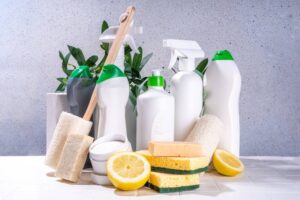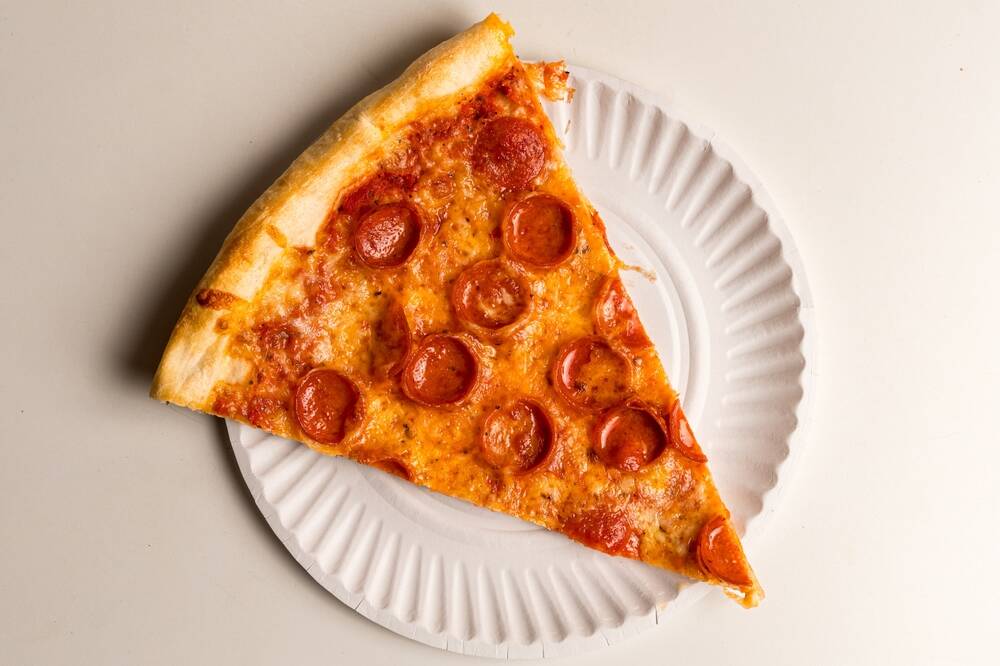Most of us would agree that a clean, tidy house is a more pleasant place to live than one with mold, dirt, and funky smells. Not to mention that it’s more healthful.
You see, I’m not the kind of person who’s obsessed with having my house always sparkling clean—not that it would be a bad thing. However, I do like cleaning my house. I find it therapeutic.
But there’s one thing that irritates me: cheap cleaning products. They may be OK, but they aren’t really effective if you want to remove all the dirt and stains in your house. So I’ve decided to choose some good-quality cleaning supplies. The only problem is that they can be pretty expensive.
The truth is, you can easily do most cleaning tasks just as well with a few inexpensive household items rather than spending your hard-earned money on mass-produced counterparts.
Here are 9 costly cleaning products you’ll never have to buy again!
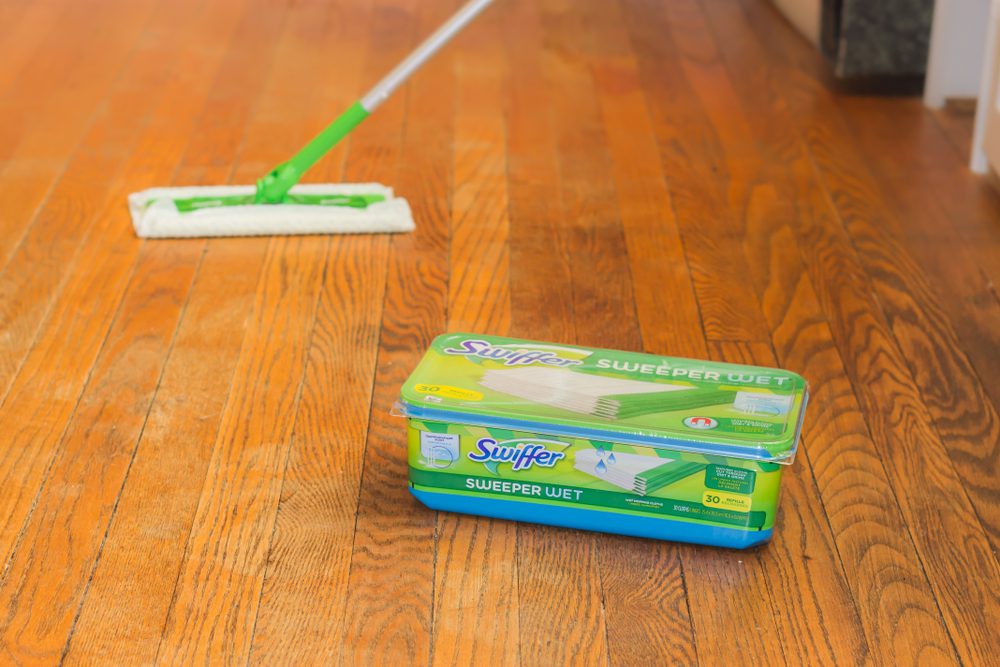
1. Swiffer WetJet refill
Let’s face it, a bucket and mop are so much cheaper, but not everyone will use them. A friend of mine is dealing with some health conditions and loves the Swiffer WetJet. It’s very easy to use.
But there’s a thing she doesn’t love, and that’s the cost of the refills. I visited her last week and gave her some advice on how to free herself from refill tyranny. It’s something I’ve discovered over the past year. It’s pretty simple.
Turn the WetJet cleaning product upside-down and immerse it for about 90 seconds in a pan of boiling water, just far enough to cover the cap.
With a good, hard twist, remove the cap. Cut off the locking tabs inside the cap using a nail clipper. Refill the bottle with some water and a small amount of a DIY cleaning product: a few drops of lemon juice, tea tree oil, bleach, or your favorite soap.
Reattach the cap. That’s it!
2. Swiffer replacement pads (dry or wet)
These pads go right into the trash after one use! Luckily, making reusable replacements is a pretty easy task.
For dry sweeper pads, try instead using microfiber cloths that you can buy from the dollar store. Grab a dry Swiffer sweeper and secure the microfiber cloth using clothespins or rubber bands. This way, you can be sure they will hold the ends of the cloth together on the top of the sweeper’s head.
After sweeping the floor, fill the Swiffer WetJet with the DIY cleaning product (see No. 1), then attach the DIY replacements for the wet pads to it. You can make the wet pads from pieces cut from old towels or worn washcloths.
You’ll need to make a cut in an “X” shape in the fabric right near the spray head to allow it to do its job. Make a half-dozen or even more, as these cloths will become dirty and wet and you’ll need to remove them, just like the disposable kind. The great difference is that they will be washed and reused until they fall apart.
3. Foaming bathroom cleaner
Cleaning products like Scrubbing Bubbles are great. You apply it to the soap scum, wait a few minutes, and that’s it! The dirt is gone.
However, I have a low-cost clone that you may like. Mix one part blue Dawn dish detergent with one part white vinegar in a spray bottle and shake for a few seconds. Spray it on those stubborn soap scum stains, wait a few minutes, then rinse clean.
Does it stink? Yes. However, the smell goes away, much like the aroma of commercial cleaning products.
Bonus for those dealing with asthma or allergies: This homemade cleaner doesn’t trigger them like commercial products.
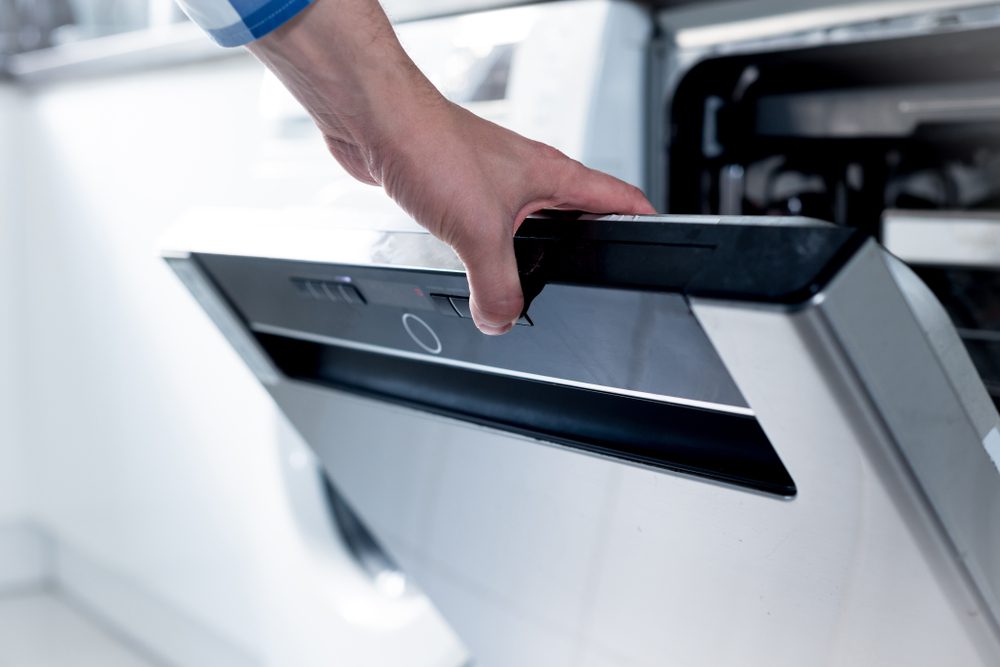
4. Dishwasher cleaner
Does your dishwasher smell a bit funny? If so, it’s because bits of soap, grease, and food can build up inside the appliance, providing a breeding ground for bacteria. As they grow, so does the unpleasant smell.
There are two options for dealing with this. The first one would be to run a cycle with an empty machine, but make sure you use some special „dishwasher cleaner.” The second option would be to do the same action but use a DIY cleaning product instead of a dishwasher cleaner. White vinegar is a pretty effective solution. Use one cup, and don’t add soap. Or you can use a packet of unsweetened lemonade mix (without soap).
5. Fabric softener
Did it ever happen to you to launder your curtains, sheets, or towels only to have them smell mildewed? (I’m looking at you, Pacific Northwest!) That’s why using a fabric softener is lifesaving. However, some people develop rashes from the harsh ingredients in commercial fabric softeners.
Fortunately, I have some solutions for you. You can add up to one cup of white vinegar to the rinse cycle. And don’t worry; the smell will go away. If you’re looking for a clean, subtle fragrance, here’s something I recently discovered: Blend six parts water, two parts hair conditioner, and three parts white vinegar in a resealable container. Use the same amount you would use of a commercial fabric softener.
Another idea would be to make your own dryer sheets. Add eight drops of your favorite essential oil to ½ cup of vinegar (here’s a kit of essential oils that you may be interested in). Put the mix in a jar or container that seals tightly. Cut small squares of soft fabric (you can use an old T-shirt) and place them in the mix. To use, squeeze the small piece of cloth and toss it in with the dryer load.
6. Cat box deodorizer
Sometimes you walk into someone’s house and know immediately that the owner has a cat. Other times, however, you simply can’t tell, which has a lot to do with how well the kitty toilet is taken care of.
If you have a cat, then you must know how important it is to clean your cat box. Clumping litter is life-saving, but it’s definitely not the be-all and end-all. Luckily, I’ve discovered a trick that helps me keep any funny smell at bay. Here’s what I do.
Every few weeks, I empty the box entirely, making sure there’s no dried litter left. I scrub it with hot water, then I fill it with a mixture of 1 gallon of hot water and 1 teaspoon of chlorine bleach. After five minutes or so, I empty and rinse, then dry thoroughly with paper towels. That’s it; I don’t use any cleaning products.
Finally, I sprinkle some baking soda on the bottom of the box before refilling it with litter.
7. Hard-water stain remover
Mineral-saturated water can end up leaving some nasty stains on bathroom porcelain. While commercial cleaning products may be effective at removing any kind of dirt, they contain harsh ingredients and don’t always come cheap.
Once again, white vinegar may solve the issue. The process is pretty simple. Apply vinegar, let it sit for about two minutes, scrub the area, and then rinse. One thing to keep in mind here, though: make sure you do a test to see how the surface reacts to the white vinegar (do this on a small portion that’s not in sight).
If it’s a toilet, stop the water supply and flush until there’s no more water in the bowl (or at least most of it is gone), then pour a few cups of vinegar. Let it sit for a few minutes, then scrub the area. Magic! And you don’t even need to use a cleaning product!
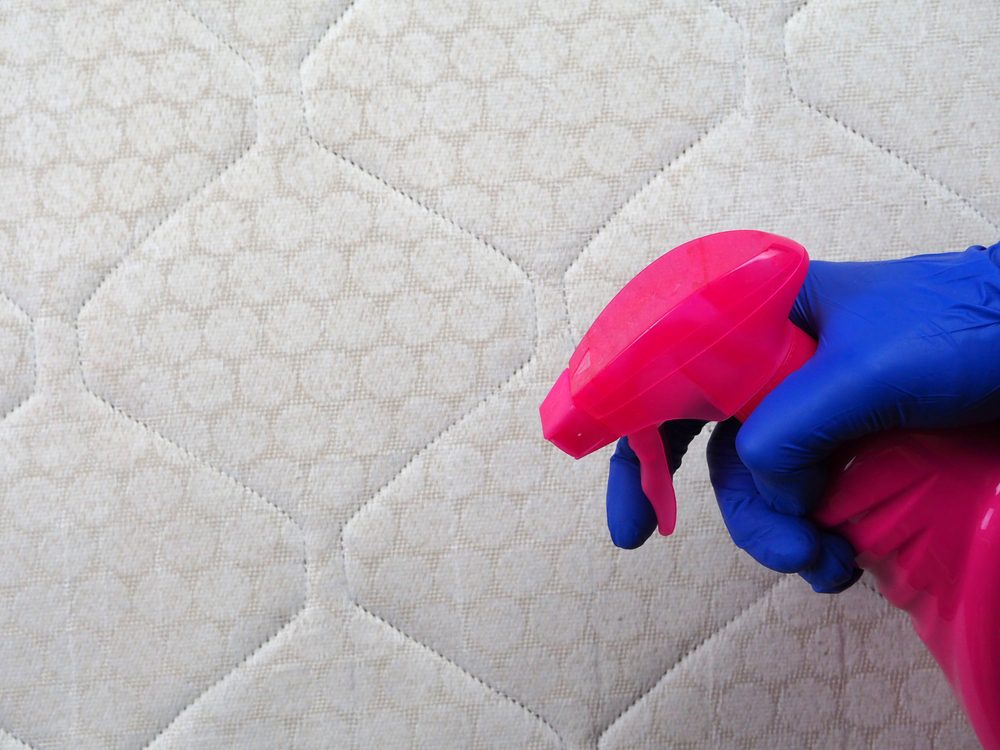
8. Fabric freshener
You love your dog. You do! But that canine odor seems to spread everywhere in your house. No matter what you do, the smell still lingers. Of course, the hotspot for this odor is the doggy bed and the sofa your dog knows he’s not supposed to lie on.
Anyway, the list of potentially smelly things inside your house could go on and on. If we were to believe what we see in commercials, spraying on a fancy fabric refresher would make the world brand new again. Would it, though?
Instead, search online for “homemade Febreze” or “homemade fabric freshener,” and you’ll find lots of DIY recipes that call for ingredients like baking soda, essential oils, vinegar, rubbing alcohol, distilled water, fabric softener, and—my favorite—cheap vodka.
9. All-purpose cleaner
This one is so easy to make. Mix equal parts water and vinegar in a spray bottle. The mixture will tackle jelly drips on the kitchen counter, grease spatters on the stovetop, streaks on mirrors and windows, and toothpaste smears on bathroom fixtures.
Basically, this homemade cleaning product is multi-purpose. Funny fact: My husband calls vinegar “nature’s Clorox.” Well, he’s not far from the truth. If you don’t like how it smells, you can add a few drops of essential oil or fabric softener.
You may also want to read These Experts Revealed The Best Cleaning Products Under $10.

